As China has become a rising power, Chinese coercion—the use or threats of negative actions to force the target state to change behavior—has garnered the attention of foreign policymakers. Although China uses military coercion less in the post-Cold War period, it has become increasingly well-versed in the use of non-militarized coercion, including diplomatic and economic sanctions.
This article discusses the rationale and tactics of Chinese non-military coercion in non-core interest issue areas such as human rights and the deployment of Terminal High Altitude Area Defense (THAAD). President Xi Jinping’s coming into power has not changed the rationale and tactics of Chinese coercion. China has continued to be a cautious bully. The paper first discusses the breadth of Chinese core interests and demonstrates that China’s definition of core interests has been stable despite leadership changes. It then examines Chinese non-military coercion during the Hu Jintao and Xi Jinping administrations, using the 2010 Nobel Peace Prize in Norway and the 2017 deployment of THAAD in South Korea as cases. The paper concludes by offering policy implications for the United States.
The continuity of China’s core interests
The Chinese government definition of “core interests” has always been stable. For example, then Chinese State Councilor Dai Bingguo stated in 2010 that CCP’s leadership, territorial integrity, and continuous economic and social development were China’s core interest while singling out Taiwan as a core interest. Other specific territorial disputes such as those in the South and East China Seas were never once officially stated as a core interest. This hierarchy of Chinese national interests remains unchanged even after Xi Jinping came into power, as manifested by the official compilation of Xi Jinping’s statements on national security from 2012 to 2018.1 In this sense, issues related to other states’ accusations against China’s human rights and nuclear proliferation are important to Chinese national security, but not core interests. Nevertheless, it is still important to examine Chinese coercion regarding these non-core interest issues. For one, more attention has been paid to issues related to Chinese core interests. For another, just because these are not necessarily core Chinese interests, does not mean human rights and nuclear non-proliferation are of no interest or value to the United States. As such, the following passages examine Chinese coercion in the realm of human rights and nuclear non-proliferation.
Chinese coercion against Norway regarding the Nobel Peace Prize
China imposed sanctions on Norway after the Nobel Peace Prize was awarded to Chinese political dissident Liu Xiaobo, who has been imprisoned due to his activism. Immediately after the award, China imposed both diplomatic and economic sanctions. The immediate goal of Chinese coercion was to stop Norway from “meddling with China’s internal affairs,” according to interviews with former Norwegian diplomats based in Beijing. The broader goal, however, was preventing other countries from following Norway and engaging in activities “that harmed Chinese national interests,” as manifested by the Chinese embassy in Norway’s letters to other foreign embassies. This suggests that the rationale of Chinese coercion goes beyond a particular target state: China also aims to deter other countries from engaging in similar activities in the future.
Regarding economic sanctions, China canceled exchange visits between the two sides, terminated trade negotiations, and froze the negotiation on free-trade treaties. Despite the Norwegian government’s explanation that the prize was independent of government decisions, China imposed sanctions on Norwegian salmon exports to China—Norway’s market for fresh salmon in China fell from about 90 percent in 2010 to under 30 percent in the first half of 2013. Interviews with former Norwegian diplomats confirmed this ban on Norwegian salmon. Former Norwegian diplomats further indicated that some state-owned and partially-state owned enterprises from Norway had difficulty in operating in China, such as getting contracts in China (when those firms do have the areas of expertise and credential).
As for diplomatic sanctions, China denied a visa for a former Norwegian prime minister to visit China. Also, China excluded Norway from the beneficiary of the policy of visa-free transit, starting from January 2013. The beneficiaries are able to stay in Beijing for up to 72 hours without a visa. All European countries were given this policy of non-visa transit except Norway. Diplomat sanctions continued, and senior level exchanges between Norway and China came to a complete stall. That is, even though this sanctions episode originated during the Hu Jintao administration, it continued through Xi Jinping’s reign. The manner through which China coerced Norway did not change, despite the leadership changes. Norway eventually relented; former Norwegian diplomats stated that in May 2014, the Norwegian government publicly announced that Prime Minister Erna Solberg would not meet with the Dalai Lama. In December 2016, the foreign ministers of China and Norway met in Beijing, during which the Norwegian foreign minister stated that Norway “will not support any behavior that harms China’s core and important interests while upholding the ‘one-China’ policy.”
This sanctions episode is interesting because it spanned from the Hu Jintao administration to Xi Jinping’s reign. Yet the practices stayed the same, suggesting that there is continuity about China’s sanctions rationale and tactics. Several points are worth noting regarding China’s rationale and tactics of coercion.
First, Chinese sanctions, in this case, are, by and large, symbolic and serve as a signaling device. China was not a major salmon export destination for Norway; interviews with Norwegian officials detailed that Norway’s largest export destinations were Russia, the European Union, Japan, and the United States. In fact, less than 2 percent of Norway’s salmon went to China, even before this sanctions episode. In other words, Norway can easily find exit options—alternative markets other than China. Norwegian diplomats also noted that despite the salmon ban, Norwegian salmon went into the Chinese market via indirect channels, i.e., other countries. Chinese sanctions were therefore symbolic and did not actually inflict damage on the Norwegian economy. What is interesting, however, is how China imposed the salmon ban. According to Norwegian diplomats, Norwegian salmon was held up in Shanghai for “food safety” issues, and the agency responsible for the salmon ban was China’s General Administration of Quality Supervision, Inspection, and Quarantine (AQSIQ), the same agency that imposed the banana quarantine on the Philippines. Norwegian diplomats noted that just as Airbus was the pride for Europe, salmon was a “national fish” and “national symbol” for Norway. This is something that the rest of the world all recognized. That is, to say that the salmon had “safety issues” was severely insulting to Norwegians. Although China did impose sanctions that “bite,” its symbolic sanctions sent a clear signal to Norway and other countries that China wanted Norway to change its behavior.
Second and relatedly, as seen in the salmon ban, Chinese economic sanctions tend to be “small” and focused on sectors that were not of importance to the Chinese economy. For example, Norwegian diplomats noted that China needed Norway for its expertise in deepwater drilling, which was critical if China wanted to make advances in energy exploration in the South China Sea. Consequently, a Chinese state-owned enterprise—Blue Star—bought a Norwegian hydro company in 2011 despite the cold bilateral relations. In short, China was highly calculative and risk-averse in terms of what sectors to impose sanctions on, and the bottom line for China was to avoid economic loss to itself. This preference for avoiding economic loss explains why Chinese sanctions tend to be small and highly selective, especially if China depends on the target state for specific sectors. It also explains why China tends to coerce smaller countries instead of picking on the United States.
Third, Chinese economic sanctions tend to focus on large state-owned enterprises or large private businesses. Former Norwegian diplomats noted that private Norwegian companies rarely had difficulty in doing businesses in China, whereas some state-owned and partially state-owned enterprises from Norway had difficulty in operating in China, including getting contracts that would have been secured were it not for the awarding of the Nobel Peace Prize to Liu Xiaobo. China’s tactic worked because Norwegian diplomats indicated that the Norwegian business community had been pressuring the government to improve relations with China. This practice of targeting large or state-owned businesses manifests itself also in Chinese sanctions against Airbus and British Petroleum.
Chinese coercion against South Korea regarding THAAD
China has been systematically opposed to U.S. ballistic missile defense systems in South Korea (THAAD). China has indeed imposed economic sanctions on South Korea for its agreement for the United States to install THAAD. China’s goals of coercing South Korea were clear: China’s Foreign Ministry repeatedly opposed THAAD and urged South Korea to stop the installation process and refrain from “venturing further into the wrong path.” Similar to the coercion episode against Norway, China’s rationale was to prevent the target state or other states from engaging in behavior that further “harms” China’s interests.
The sanctions episode against South Korea regarding THAAD is another example suggesting the continuity of China’s sanctions practices regardless of who is in power. It was initiated during Xi Jinping’s term. Even though the issue is not about human rights but rather missile defense, China displayed similar tactics and rationale when it came to economic sanctions.
First, Chinese coercion in response to THAAD was symbolic and served as a signaling device. This does not mean that Chinese coercion did not inflict damage on South Korea, but Chinese coercion could have been much greater in scale. For example, China blocked the streaming of the latest South Korean music and dramas on Chinese websites and TV channels. K-pop stars had to cancel their concerts in China. The ban was not lifted until November 2017. Similarly, by March 2017, China had closed more than 20 stores of “Lotte Mart,” a South Korea supermarket chain that operated stores in China and other Asian countries. China cited “fire safety concerns” as the reason for the closure. By April 2017, about 90 percent of the Lotte Mart in China had been closed. Lotte was eventually forced to abandon and sell all of its Lotte Mart stores in China. Chinese coercion against South Korea was indeed greater in scale when compared with its coercion against Norway, yet it was still by and large symbolic, as it did not touch on major sectors of Sino-Korean economic relations.
Second and relatedly, just as in the Norwegian case, China was calculative in what businesses it decided to coerce and did not impose sanctions on sectors that were important to China. For one, coercing or losing Lotte Marts did not affect the Chinese retail industry, as China has numerous foreign and domestic “exit options”—alternative choices. With retail giants such as Carrefour and Walmarts, Lotte Mart was not even among the largest foreign retail markets in China and operated mainly in second or third-tier cities. Domestic retail giants such as Yonghui Superstores were also much more popular and larger in scale. The surge of e-business in China also rendered physical retail stores less important. Driving Lotte Mart out of the Chinese market will not hurt the Chinese economy; if anything, it might help domestic Chinese retail chains by “eliminating” a competitor. For another, what China needs from South Korea are mainly electronics, industrial chemical products, and optical medical equipment, which China did not impose sanctions on. Despite the THAAD episode, South Korean exports to China in 2017 actually increased by 14.2 percent and South Korea enjoyed a surplus of 44.3 billion U.S. dollars. In short, China did not sanction the sectors that it needed the most.
Third, China exhibited a consistent pattern in coercing large private or state-owned businesses in the THAAD episode, as seen also in Chinese sanctions against Norway, France, and Britain. The Lotte Group is South Korea’s fifth largest business conglomerate and China was Lotte Mart’s largest overseas investment destination.
Policy implications and suggestions for the United States and allies
Policymakers should be aware of China’s logic and tactics of coercion. In short, Chinese coercion serves as a signaling device. Interestingly, China seems to have a rationale of using compellence to deter. At the same time, China is highly calculative and rarely utilizes coercion with great magnitude. When imposing economic sanctions, China singled out large state-owned or private businesses of the target state from which China had exit options, while making sure to avoid sectors of the target state that China needed the most, most of which were high-tech machineries or intermediary machinery products. That is, economic concerns play an important role in China’s coercive calculation.
As such, there are several policy implications for the United States. First, the United States can use its economic leverage against China to deter China from coercing the United States. Even though China has been emphasizing domestic consumption in recent years, it will be a long time before China transitions into a domestic consumption-oriented economy. The good news for the United States is that it is still China’s most important foreign market. China still needs the United States for technological transfers and high-tech products. Additionally, the United States also has leverages in the realm of foreign direct investment, as China has been pushing its indigenous companies to be globally competitive. For the time being, China still needs the United States more than vice versa. This manifests itself in China’s differential treatments towards the United States and other countries such as France. For example, China imposed biting economic sanctions on France and Britain following their leaders’ reception of the Dalai Lama, but never sanctioned the United States for meeting with the Dalai Lama. Even though China threatened to sanction Boeing following U.S. arms sales to Taiwan in 2010, it did not carry out such threats. The United States should signal clearly to China its leverages, threatening in private economic sanctions if U.S. national security interests are at stake and reassuring China there will be no sanctions if China complies. These communications may be best through private channels so that China’s reputation for resolve is not affected. It is important to note that an all-out trade war that receives full media coverage will not be as effective as targeted economic pressure done privately. The United States could also further limit China’s exit options by getting U.S. allies on board, especially if the values and security interests of U.S. allies are in danger. If China can use carrots and sticks, so can the United States.
Second and relatedly, it is true that the long-term trend can be worrying, since U.S. leverage will diminish as China transitions fully into a domestic consumption-oriented economy. Yet it is difficult to see China accomplishing this transition in the near future. And the United States can elongate China’s transition by continuing to stay at cutting edge of technological advancement such that China still depends on the United States for technological transfers. The United States needs to make sure enough resources and talents are devoted to technological development. As MIT President Rafael Reif noted, China’s challenge can be America’s opportunity.
Third, to hedge against the potential risk of Chinese coercion, large U.S. businesses may consider strengthening alternative markets and investment destinations. This is a particularly viable option, since the increase of labor costs in the Chinese market might begin to outweigh the benefit of investing in China. With cheaper labor costs, Association of Southeast Asian Nations (ASEAN) countries, for example, have huge potential and would most likely welcome U.S. investment to counter Chinese influence. The United States can learn from Japan’s example. Japan has been cultivating relationships with ASEAN for many years and has just reached an agreement in principle with ASEAN on the Japan-ASEAN Technical Cooperation. Expanding alternative markets or foreign direct investment (FDI) destinations is also useful, because exports to or FDI in these alternative countries may eventually end up in the Chinese market precisely via these alternative countries, just as in the case of Norwegian salmon. In this way, the United States will still keep China as an indirect export market without threats of Chinese economic sanctions.
Fourth, what should the United States do when China bullies U.S. allies? What should U.S. messages be to its friends and allies? These are indeed tough policy questions. U.S. policymakers first need to have in their mind a clear hierarchy in terms of what the United States values the most. Does the United States value alliance credibility enough that it is willing to bear the risk of a potential escalation of conflicts with China on behalf of its allies? Which allies and issue areas are more important to the United States such that the risk of escalation is justified? In a sense, a healthy debate on U.S. grand strategy is much needed. If the United States decides to help allies facing Chinese bully, the United States, as I mentioned before, have a full range of policy tools that are not just military coercion, such as targeted economic leverage. By utilizing these non-militarized tools of influence in a “quiet” and private way, the risk of escalation can be lowered. As for U.S. messages to its allies, there is a danger of a “resolve dilemma” in that both China and U.S. allies want to establish resolve. Nevertheless, just like the United States, U.S. allies can benefit from increasing the geopolitical pressure for China to use military coercion, but in a quiet manner. Japan’s first-ever publicly announced anti-submarine warfare exercise in the South China Sea increases China’s geopolitical pressure, but simultaneously increases China’s need to establish resolve because it is so publicized through international media exposure. “Quiet rebalancing,” therefore, might be a better option for both the United States and its allies.
-
Footnotes
- Central Party School, Xi Jinping guanyu zongti guojia anquan guan lunshu zhanbian [Beijing: Zhongyang Wenxian Chubanshe], 2018, p. 40-48.
The Brookings Institution is committed to quality, independence, and impact.
We are supported by a diverse array of funders. In line with our values and policies, each Brookings publication represents the sole views of its author(s).
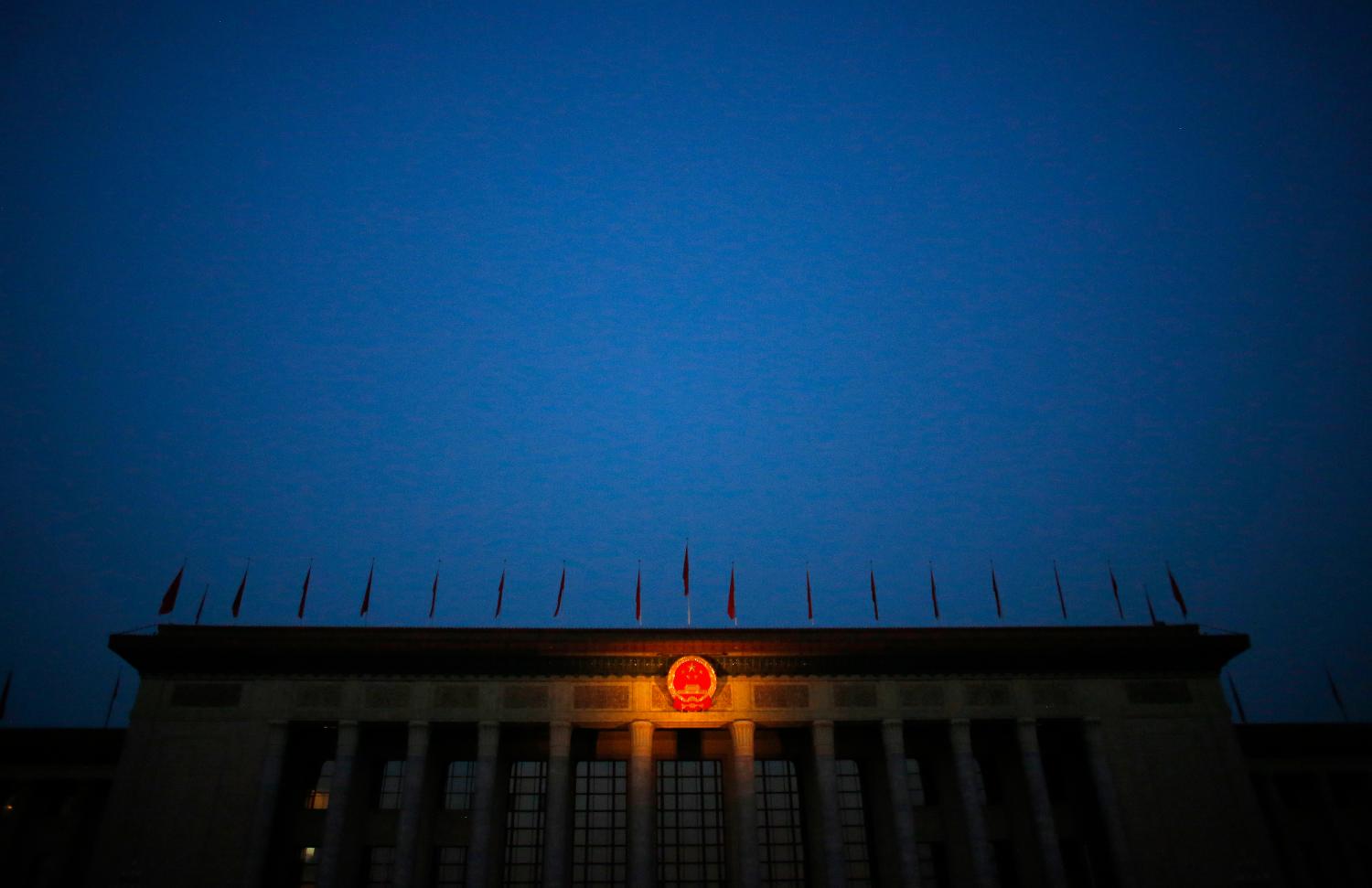
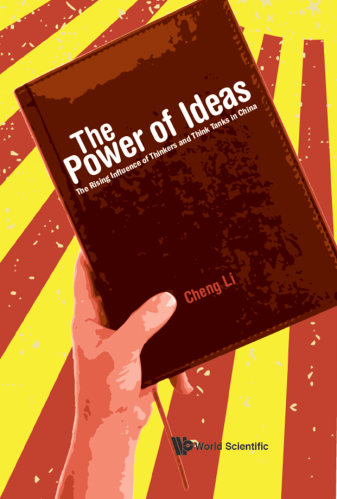
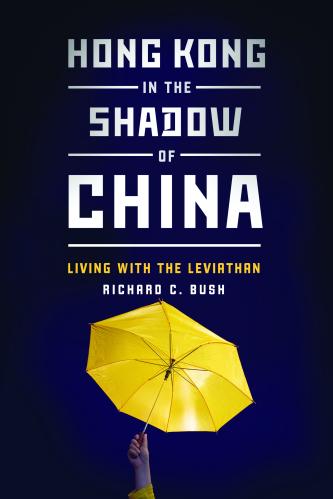
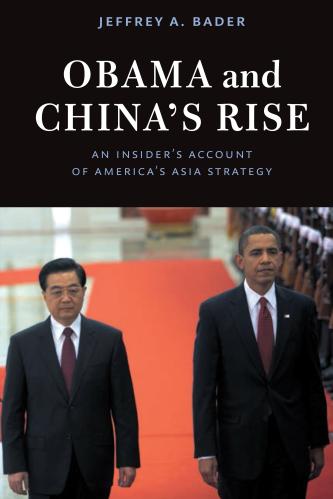
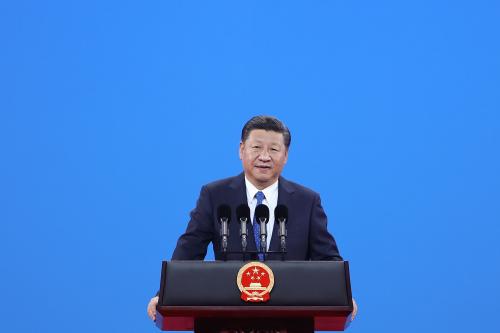
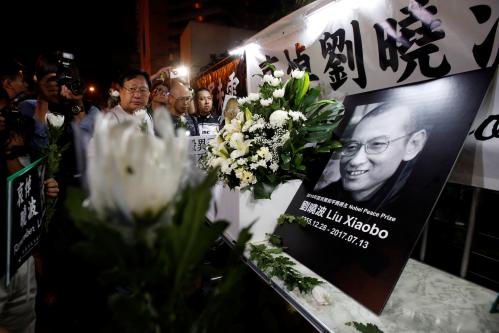
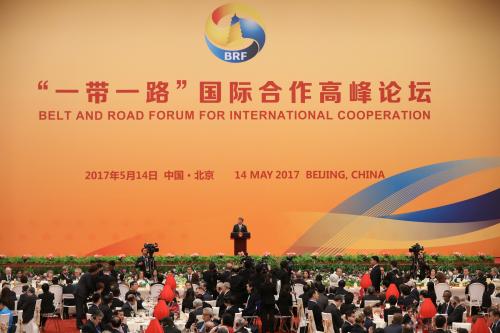



Commentary
Chinese non-military coercion—Tactics and rationale
January 22, 2019